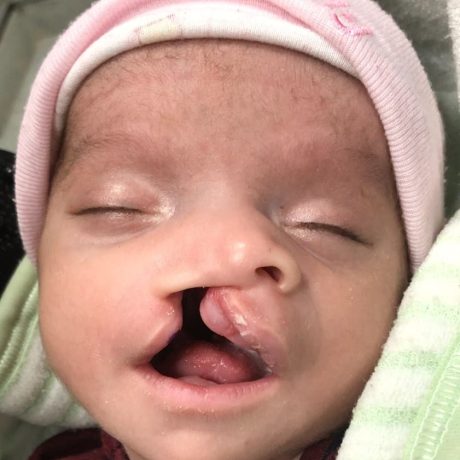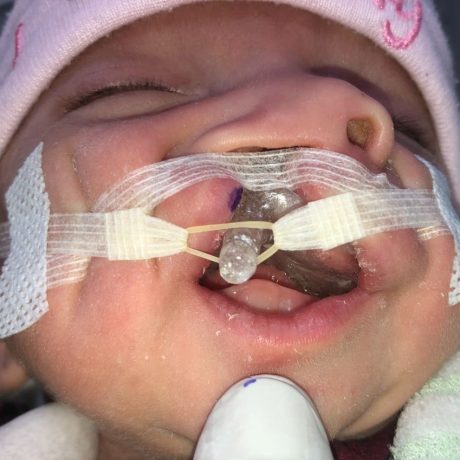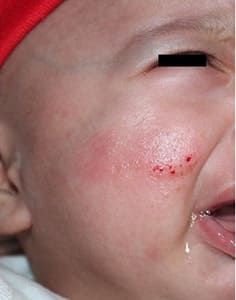Cleft lip and palate is a common congenital condition affecting children, making it essential for parents to be well-informed about the available treatment options. One such technique that has gained popularity over the years is naso-alveolar molding (NAM), which is a non-surgical approach to improve the appearance and function of a child’s cleft lip and nose. In this blog post, we’ll explore what naso-alveolar molding is, how it works, and weigh its pros and cons to help you make an informed decision for your child.
What is Naso-Alveolar Molding (NAM)?
Naso-alveolar molding, often abbreviated as NAM, is a technique used to reshape a baby’s cleft lip, nose, and gum before surgery. It involves using custom-made dental appliances and special tapes to guide the growth and alignment of the affected tissues.1


The aim of NAM treatment is to enhance and make the surgical repair easy as well as effective by narrowing the cleft, molding the nasal cartilage, and passive control of the alveolar segments thereby improving the overall appearance of the nose and mouth.

Patient with unilateral cleft lip and palate before nasoalveolar molding (NAM) treatment, after NAM treatment, and after surgery.3
Pros of Naso-Alveolar Molding
- Improved Aesthetic Outcome
NAM helps in gently molding the tissues, allowing for a better alignment of the cleft lip, nose, and gum. This results in a more natural-looking appearance, which can have a positive impact on the child’s self-esteem as they grow older.
- Facilitates Surgery
By aligning the tissues before surgery, the actual surgical repair becomes more straightforward for the surgeon. This can potentially reduce the number and complexity of surgical procedures needed to achieve the desired results.
- Enhanced Functionality
NAM not only improves the aesthetics but can also enhance the function of the affected areas, such as breathing, feeding, and speech. This is crucial for the overall quality of life of the child.
- Early Intervention
Starting NAM early allows for intervention before the baby reaches 3-4 months of age. Early treatment can significantly influence the success of the molding process and overall outcomes.
Cons of Naso-Alveolar Molding
- Time-Intensive Process
NAM typically requires regular visits to the healthcare provider, adjustments to the appliance, and consistent care at home. This can be demanding on both the child and the parents, especially in terms of time and effort however, a recent study showed that parents believed that NAM treatment was helping their children.4

- Discomfort for the Child
The molding appliances and tapes may cause some discomfort for the child. The most common complication of NAM according to a study is skin and mucosal irritation and ulceration. It’s important to closely monitor the baby and ensure their comfort throughout the process.
Pic showing skin irritation.5
- Cost
The cost of naso-alveolar molding can be a concern for some families. It’s essential to discuss the financial aspect with the healthcare provider and explore available options.
Frequently Asked Questions
How long will my baby wear a NAM device?
Babies with unilateral clefts usually wear the Nasoalveolar Molding (NAM) device for about three months while bilateral clefts may need the device for up to six months. Once the plastic surgeon and orthodontist agree upon the results, the baby is then scheduled for corrective surgery.
Is my baby eligible for the NAM procedure?
The cleft team assesses each patient to decide whether NAM is required for a patient or not. The determining factor as to whether a baby is eligible for NAM is the parents’ commitment to dedicating the time and patience needed for the technique to succeed. Parents must clean the device, tape it in place, deal with skin or mouth irritations, and make weekly or biweekly trips to our hospital.
Is NAM worth all the trouble?
NAM treatment approaches vary across centers and don’t have universal acceptance. Some centers opt not to use NAM due to limited experience or lack of acceptance within their teams. Our team strongly believes in the effectiveness of NAM for optimal results during the early years of life. Nasoalveolar molding allows the orthodontist and surgeon to enhance a significant cleft in the months leading up to surgery, resulting in an improved nose shape and a thinner scar in a single surgical procedure. A better outcome in the initial surgery translates to fewer surgeries during childhood.
How does Nasoalveolar Molding (NAM) work?
The baby wears the molding plate around the clock, even during feeding. Parents manage daily cleaning and tape changes for the molding plate. After a week, the orthodontist makes gradual adjustments to the plate, sculpting and adding acrylic to shape the nose. These adjustments guide gum growth and correct nose flatness. Each appointment lasts around 20 to 60 minutes. By surgery time, the nose is lifted and narrowed, the gum gap reduced, and the lips are closer. A smaller gap lessens tension during cleft closure, leading to improved final outcomes, based on our experience.
Conclusion
Naso-alveolar molding is a valuable non-surgical technique for children born with cleft lips and palates. While it comes with its set of pros and cons, its potential to enhance the appearance, functionality, and ease of future surgeries make it a compelling treatment option. If you’re considering NAM for your child, have an open discussion with our team to understand if it’s the right choice for your family.
If you have any thing else that you want information about, let us know in the comment section.
References:
- Grayson BH, et al. “Presurgical nasoalveolar molding in infants with cleft lip and palate.” The Cleft Palate-Craniofacial Journal. 1999;36(6):486-498.
- Mulliken JB, Martinez-Perez D, Teichgraeber JF. “Early nasoalveolar molding intervention for infants with cleft lip and palate.” The Cleft Palate-Craniofacial Journal. 2004;41(3):232-237.
- Magyar D, Nemes B, Pálvölgyi L, Pulay Z, Nagy K. “The Burden of Care in Nasoalveolar Molding Treatment in Cleft Patients.” Indian J Plast Surg. 2022;55(1):87-91.
- Roth, M., Lonic, D., Grill, F.D. et al. NAM—help or burden? Intercultural evaluation of parental stress caused by nasoalveolar molding: a retrospective multi-center study. Clin Oral Invest. 2021;25: 5421–5430.Top of Form
- Jalil J, Bonanthaya K, Parmar R, Bijapur SU. Nasoalveolar molding: benefits and burdens. Plastic and Aesthetic Research. 2023; 10: 18.
Note: This blog post is for informational purposes only and should not be considered as medical advice. Always consult with a qualified healthcare professional for personalized guidance regarding your child’s health and treatment options.

